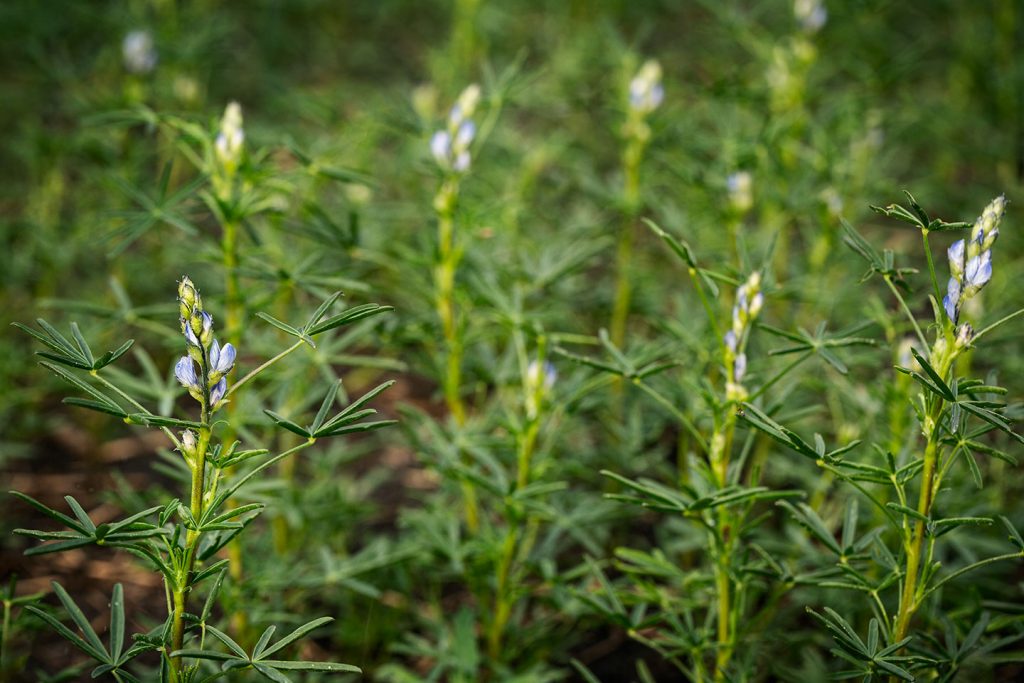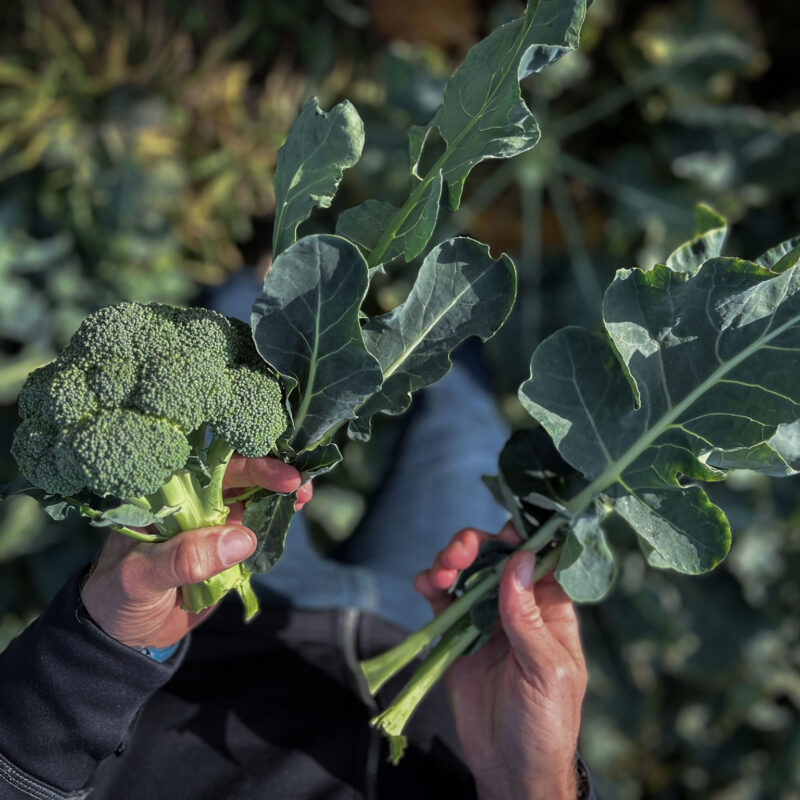Swedish Legume Mince – from pea to product
Is it possible to find an alternative to the most commonly used meat in Sweden; minced meat? An alternative which has high nutritional content, is sustainably produced and has a low impact on the climate? Axfoundation gathered food retailers, chefs, farmers and researchers to try this. The result was Swedish Minced Legumes based on sweet lupine, broad bean and grey pea – a mince that today is served everywhere from canteens in schools and places of work to households. When the winding journey from pea to product had proven successful, Axfoundation handed over further product development to a commercial partner in 2020; Svenska Färsodlarna. This was a natural step in our way of working.

We have to reduce our meat consumption if we are to meet the climate targets.
The Issue
In order to meet the climate targets, meat consumption has to be reduced. The emission of greenhouse gases from farm to fork for animal protein is generally substantially higher than for vegetable protein. The animals are fed with crops that could have been eaten directly by humans. To produce 1 kilogram of bone-less meat from ruminants, 2.8 kilograms of crops that humans could eat, such as cereals and legumes, is required. In comparison, 1 kilogram of bone-less meat from monogastric animals requires a total of 3.2 kilograms of crops that humans could have eaten instead.
The majority of the world’s farmland today is used for growing animal feed due to our meat consumption being so high. This means in practice that substantially more food from each hectare of farmland could be harvested if it was used for growing food rather than animal feed.
Grazing cows are necessary in Sweden to keep the countryside open and maintain biodiversity. This means that there are many advantages with meat from animals grazing on grassland that isn’t ploughed, sowed, fertilized or cultivated. But far from all Swedish meat comes from natural grazing. Furthermore, almost half of meat eaten in Sweden is imported and from animals that have been fed cereals and soy, food that could have been eaten by humans instead.
The wide range of meat and dairy substitutes is of course a good thing. However, most of these meat and dairy-like products are made from soy. Soy is a very good crop from a nutritional perspective, but it’s primarily grown far away from Sweden, since soy doesn’t grow very well in our latitudes and it’s often cultivated in a manner which harms both nature and the people involved in the production.
Our Solution
Axfoundation started by looking at the most commonly used meat in Sweden, minced meat, in order to increase the consumption and cultivation of legumes, and at the same time decrease the consumption of non-sustainably produced meat. We wanted to make it easier for families to find a sustainable, tasty and nutritious alternative to minced meat for everything; sauce Bolognese, lasagna, meatballs and tacos. The idea was born to produce a mince containing Swedish legumes instead of soy.

Swedish Legume Mince – with Swedish beans instead of soy.

Axfoundation started to test cultivating sweet lupine at Torsåker farm in 2017.
Our Work
Axfoundation started tests, growing sweet lupine in different cultivating systems at Torsåker farm during the 2017 growing season. The result was better than expected with both a high yield and a lupine bean with high protein content.
We identified and tested two more legumes, apart from the sweet lupine, that are especially interesting as food; broad beans and grey peas. The broad bean is today mainly used as animal feed, but is closely related to the fava bean which is an excellent food product. The grey pea has historically been a staple for northerners, but has been phased out as the yellow and green pea was refined and gave better yields.
The legumes that had been cultivated as a test at Torsåker farm were evaluated for taste and nutritional composition. Based on the results, we started a small-scale product development focusing on formulating a legume mince with as many uses as minced meat.
“Our ambition with Swedish Legume Mince was to contribute to an increased cultivation of legumes and a decreased consumption of non-sustainably produced meat.”
Results
The Swedish Legume Mince that was born at Torsåker consists of sweet lupines, broad beans, grey peas and leftovers from cold-pressed rapeseed production and a little salt. Nothing else. The mince is full of proteins with a high quality amino-acid profile and fibers which people generally don’t get enough of.
The mince was tested in production, after it had been developed at Torsåker farm, in large-scale catering establishments in collaboration with Urban Deli and later in the production kitchen at Grönsakshallen Syd. It was also tested in school canteens within the framework for the project Matlust in Södertälje.
Axfoundation has also processed the minced legumes to finished products and collaborate with food processors in order to make it possible to use the minced legumes as a mix in ingredient in minced meat, for example in meat balls. Soon, restaurants and public kitchens could buy the product from wholesalers, and the consumer could find ready-cooked minced legumes lasagna, minced legumes Bolognese and minced legumes for tacos at Urban Deli and some Hemköp shops.
In the autumn of 2020, Axfoundation handed over futher product development and commercialization of Swedish Legume Mince to a commercial player; Svenska Färsodlarna. As a natural part of our working model, Swedish Legume Mince sprouts off. What once started as an idea on Torsåker farm and a mission to contribute to a protein shift and to more Swedish-grown legumes, could now achieve even greater effect. One meal at a time.
Today, the mince is sold in most grocery stores under the brand name Svenskodlad Vegofärs. In the wholesale market, it is sold as Svensk Baljväxtfärs and is served in various settings, from lunch kitchens to school cafeterias. The mince is also included in chef Jessie Sommarström’s 50/50 Meat and Bean Patty, which is sold at Ikea.
Partners
About Sweet Lupine
The sweet lupine is a legume with pea sized beans with high protein levels. (Sweet lupine, Lupinus angustifolius, not to be confused with the poisonous garden lupine.) The nutritional content in the sweet lupine is similar to that of the soybean and can also take nitrogen straight from the air, a nutrient all organisms need to function, and fixate the nitrogen in the ground. The means that fields where lupines grow don’t need to be fertilized with nitrogen, which normally leads to substantial emissions of greenhouse gases and can lead to eutrophication in our lakes and seas. The sweet lupine has long taproots that grow deep into the ground and loosen up and bind the soil at the same time, which prevents erosion and nutrient runoff. The bean has been grown and used for food for example in the Mediterranean region, the Middle East and South America for a long time. The use has increased in later years in Australia, Europe, Russia and North America.
























































